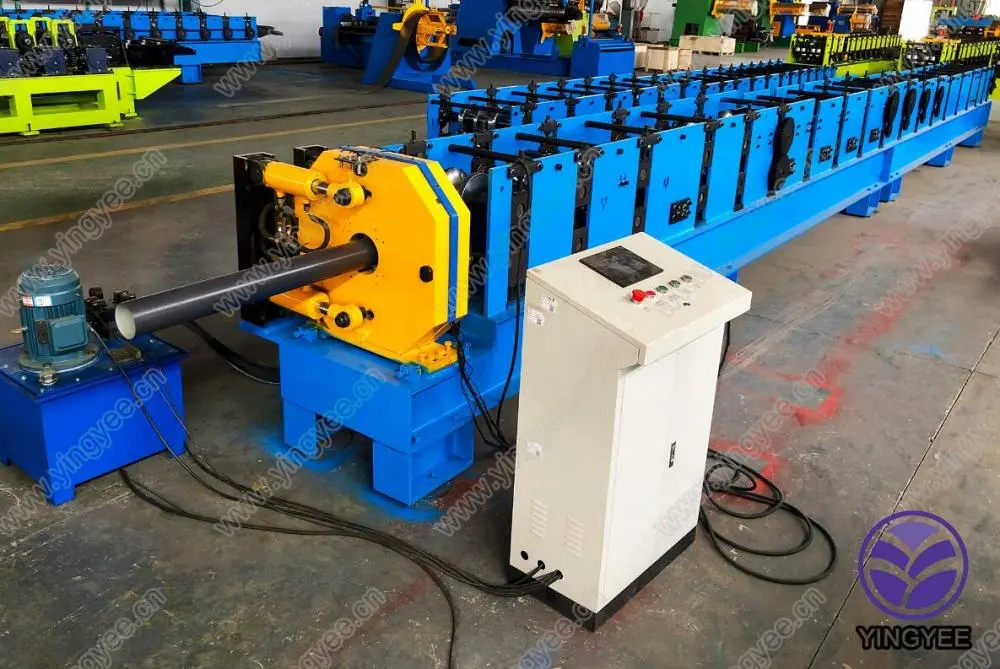
Steel Long Span Roof Roll Forming Machine Innovation in Construction
In the modern construction industry, efficiency and reliability are paramount. Among the various innovations that have emerged to meet these demands, the steel long span roof roll forming machine stands out as a vital tool that has revolutionized the way roofing materials are manufactured. This machine not only optimizes production processes but also ensures high-quality outputs that cater to the requirements of contemporary architectural designs.
Understanding the Machine
A steel long span roof roll forming machine is designed to produce continuously profiled sheets of steel, predominantly used for roofing and cladding applications. The machine operates by feeding flat steel sheets through a series of rollers that progressively shape the material into the desired profile. This technology allows for quick and efficient production of long-span roofing sheets, which are essential for large commercial and industrial structures.
Advanced Features
Modern roll forming machines are equipped with several advanced features that enhance their functionality. These machines can be customized to produce various profiles and thicknesses, providing flexibility to meet specific project requirements. The high-speed production capabilities significantly reduce lead times, allowing for faster construction schedules. Additionally, these machines often incorporate computer numerical control (CNC) systems, which ensure precise measurements and consistent quality across all produced sheets.
Another notable feature of these machines is their ability to handle a wide range of steel materials, including galvanized, pre-painted, and high-strength steel. This versatility allows construction companies to select the best materials suited for their climate and structural needs.
Benefits of Long Span Roofing

The long span roofing sheets produced by these machines offer numerous benefits. First and foremost, they provide remarkable structural integrity and durability. With fewer seams and joints, long-span roofs reduce the risk of leaks and water ingress, making them a preferable choice for industrial buildings, warehouses, and large retail spaces. Moreover, the reduced number of fasteners needed in the installation process simplifies the construction and lowers labor costs.
The aesthetic appeal of long span roofs is also noteworthy. With sleek, continuous lines, these roofs enhance the visual aspects of a building. They can be tailored to blend with various architectural styles, providing architects with a wide range of design options.
Sustainability and Energy Efficiency
In the context of increasing environmental concerns, the steel long span roof roll forming machine contributes to sustainability efforts in construction. Steel is a highly recyclable material, and many roll forming machines are designed to optimize material usage, minimizing waste. Furthermore, long span roofing systems can incorporate energy-efficient features, such as reflective coatings that reduce heat absorption, leading to lower energy consumption in climate-controlled buildings.
Maintenance and Longevity
Another advantage of using steel long span roofing is the low maintenance requirement. Steel roofs are resistant to corrosion and extreme weather conditions, which prolongs their lifespan. This results in reduced maintenance costs over time, making them a cost-effective solution for building owners.
Conclusion
The steel long span roof roll forming machine embodies the intersection of technology and construction. Its ability to produce high-quality, durable, and aesthetically pleasing roofing materials positions it as an essential component in modern construction practices. As the industry continues to evolve, the importance of such innovative machinery will only grow, enabling builders to meet the demands of larger, more sophisticated structures while adhering to sustainability goals. Investing in these machines is not just a step towards increased productivity; it is a commitment to quality, efficiency, and responsible building practices that benefit both the economy and the environment.